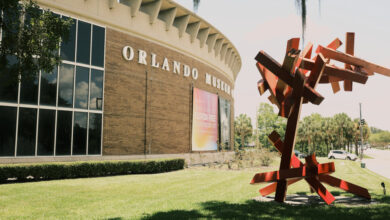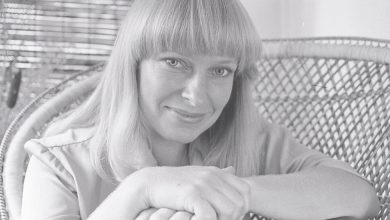Review: Black Grace Dances Out a Different Kind of Buzz

I was expecting an energy boost, and then some. But Black Grace, a celebrated company from New Zealand known for dazzling, fast dancing, returned to the Joyce Theater with “a different kind of buzz,” as the Lorde song “Royals,” quoted in the first dance of the evening, puts it. Was it contemplative? Was it intimate? In any event, for much of the program, modern dance struggled to hold its own against traditional movement drawn from the South Pacific. And vice versa.
Led by its affable artistic director and founder, Neil Ieremia, who delivered speeches from the stage, the ensemble was formed in 1995 and is admired for blending traditional and contemporary dance. But Ieremia, who was born in Wellington and is of Samoan descent, is perhaps most clearly a fan of a particular modern dance classic: Paul Taylor’s “Esplanade.” It pops up in Ieremia’s dances, from its moody crawls to its breathtaking leaps.
This was especially true in “O Le Olaga — Life,” a New York premiere inspired by his aging parents and featuring traditional performers; within it was the stomping ferocity of the Māori haka dance and scenes with poi, strings attached to white balls (used by Kura Te Ua), and a taiaha, a wooden spear (used by Edmund Eramiha). Yet while the traditional performers were vivid in their grounded presence — they also included Tuaine-Nurse Tamarua Robati and Jasmine Leota — that presence neither meshed nor contrasted dramatically with the more lyrical contemporary sections. They remained separate worlds, at least for me.
But the biggest problem in “Life,” which is set to the Vivaldi cantata Gloria, is that there were more false endings than actual beginnings.
Included in the score was “Malu A’E Le Afiafi” by the Five Stars. At the start, the dynamic Aisea Latu gently swayed his arms while singing softly, almost wistfully; stopping every so often, he would begin again. Dragging dancers in from the wings, he set them up, one by one, to form a diorama of sorts. He pointed a finger; he made a face smile. They froze in place like a captive audience for his drifting, dancing body.
After explosive, joyful sections paired with Vivaldi — the structure placed the dancers traveling along a predictable diagonal — the traditional dancers mixed in with the others, which at times seemed forced and at times essential. But ultimately “Life” felt patched together rather than sewn into something new.
For another New York premiere, “Fatu,” Ieremia was inspired by his friend, the Samoan visual artist Fatu Akelei Feu’u, who gave the choreographer a painting during a Covid lockdown. (“Fatu” is both the artist’s first name and the Samoan word for heart.) Ieremia spoke about how it didn’t look like Feu’u’s previous work; instead of his typical grid patterns, it featured three wiggly lines — at least that’s how Ieremia’s arms charmingly illustrated them — in gold, red and white.
In the work, three dancers, dressed accordingly, moved to live drumming by Isitolo Alesana. (Singers also appeared in its second half.) Demi-Jo Manalo in gold, was delicate, but ferocious, too; she flew across the stage like a feather swept up in the wind, leaping into the air and landing in a spin on the floor with seemingly invisible momentum. James Wasmer and Rodney Tyrell joined her, and they delved into a slippery, pushing-pulling generic kind of movement vocabulary, which transformed them into dancing ribbons, but little more.
The opening dance, “Handgame,” was the oldest, from 1995, and the strongest. A section from one of Ieremia’s earliest works, the piece is based on a story he read about a boy being beaten by his father for going against his wishes and attending a school dance. Here, we see echoes of abuse through the bodies of seven men seated in evenly spaced chairs as they rhythmically smacked their thighs, their chests and even their faces. Within this sasa, or seated dance, is an orchestra of body percussion, loosely incorporating traditional fa’ataupati, or Samoan slap dance.
This is where Lorde, the New Zealand singer-songwriter, came into the picture — specifically, her song, “Royals,” which the dancers performed, first pounding the rhythm into their bodies and then singing the lyrics — clipped, measured and starkly resolute.
Before it ended, a different beat filled the stage: the percussive opening to Queen’s “We Will Rock You.” You couldn’t hear the words — “You got mud on your face, you big disgrace/Kicking your can all over the place” — but they somehow commented on the dancers’ pain. It was haunting.
Black Grace
Through Aug. 7 at the Joyce Theater, Manhattan; joyce.org.





